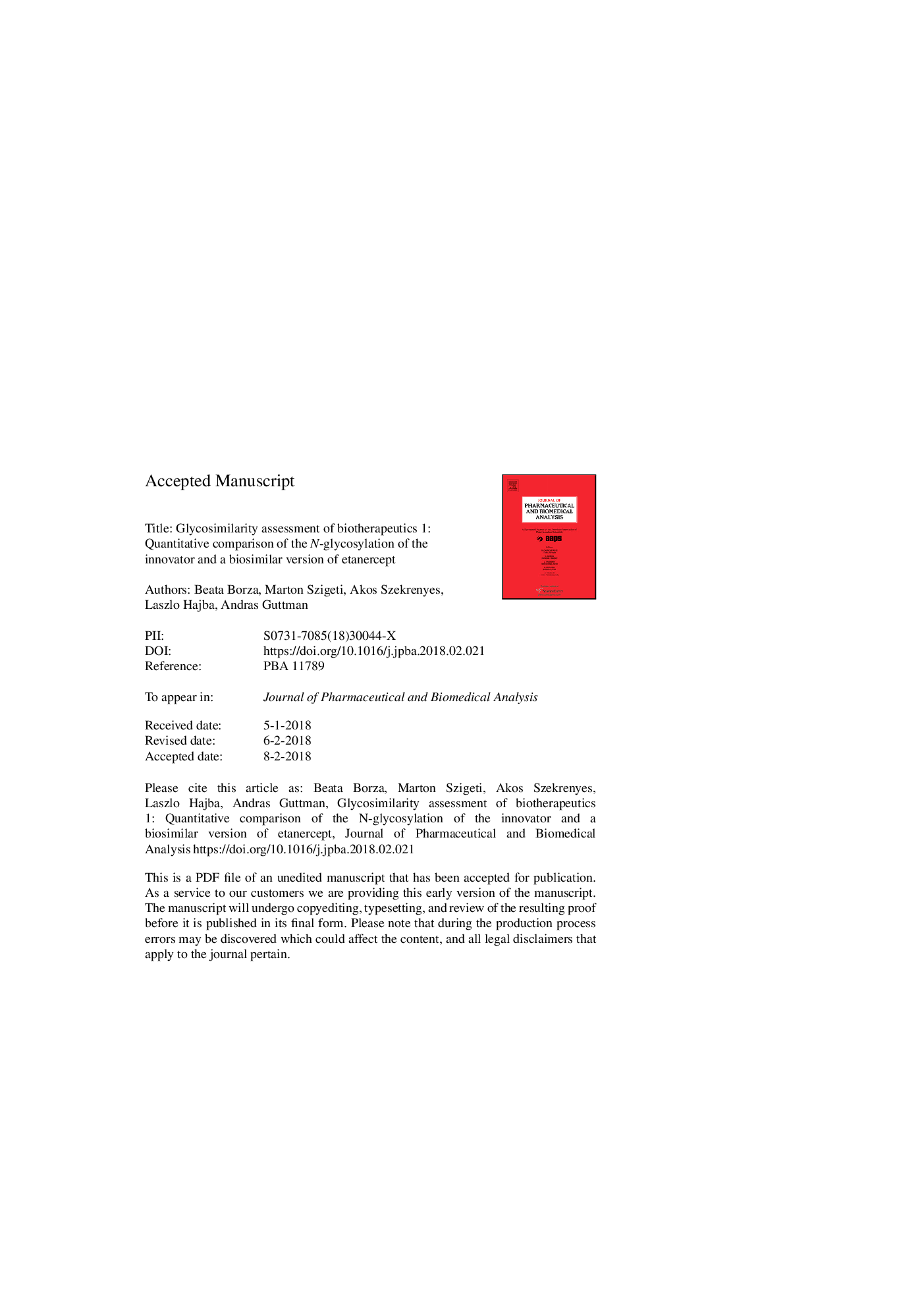| Article ID | Journal | Published Year | Pages | File Type |
|---|---|---|---|---|
| 7626702 | Journal of Pharmaceutical and Biomedical Analysis | 2018 | 13 Pages |
Abstract
The carbohydrate moieties on the polypeptide chains in most glycoprotein based biotherapeutics and their biosimilars play essential roles in such major mechanisms of actions as antibody-dependent cell-mediated cytotoxicity, complement-dependent cytotoxicity, anti-inflammatory functions and serum clearance. In addition, alteration in glycosylation may influence the safety and efficacy of the product. Glycosylation, therefore, is considered as one of the important critical quality attributes of glycoprotein biotherapeutics, and consequently for their biosimilar counterparts. Thus, the carbohydrate moieties of such biopharmaceuticals (both innovator and biosimilar products) should be closely scrutinized during all stages of the manufacturing process. In this paper we introduce a rapid, capillary gel electrophoresis based process to quantitatively assess the glycosylation aspect of biosimilarity (referred to as glycosimilarity) between the innovator and a biosimilar version of etanercept (Enbrel® and Benepali®, respectively), based on their N-linked carbohydrate profiles. Differences in sialylated, core fucosylated, galactosylated and high mannose glycans were all quantified. Since the mechanism of action of etanercept is TNFα binding, only mannosylation was deemed as critical quality attribute for glycosimilarity assessment due to its influence on serum half-life.
Keywords
TNFαCGE-LIFAPTSMOACDCCQAADCC8-Aminopyrene-1,3,6-trisulfonic acidantibody-dependent cell-mediated cytotoxicityCapillary gel electrophoresisBiologicstumor necrosis factor alphacomplement-dependent cytotoxicityBiosimilarityfragment crystallizableMechanism of actionCritical Quality AttributesGlycosylation
Related Topics
Physical Sciences and Engineering
Chemistry
Analytical Chemistry
Authors
Beata Borza, Marton Szigeti, Akos Szekrenyes, Laszlo Hajba, Andras Guttman,
